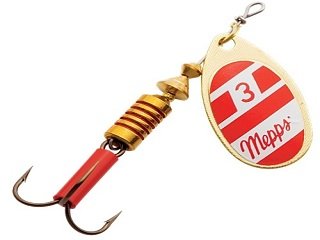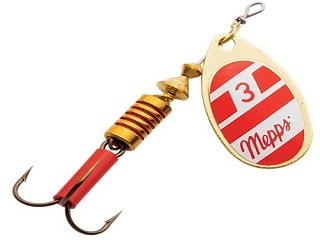 Any fly fisherman, or anyone who’s seen someone fly fish, will attest that the sport is truly an art form. Delicately dancing flies on the water’s surface to entice fish takes patience and practice to be effective, but the rewards are quite worth it. However, there are times when even your most trusted flies just won’t do the trick and other means are required. On the river, one of these options includes inline spinners, which any river angler should keep handy at all times. Here are a few tips and strategies to use these lures properly when your nymphs or wooly buggers aren’t producing strikes.
Any fly fisherman, or anyone who’s seen someone fly fish, will attest that the sport is truly an art form. Delicately dancing flies on the water’s surface to entice fish takes patience and practice to be effective, but the rewards are quite worth it. However, there are times when even your most trusted flies just won’t do the trick and other means are required. On the river, one of these options includes inline spinners, which any river angler should keep handy at all times. Here are a few tips and strategies to use these lures properly when your nymphs or wooly buggers aren’t producing strikes.
Most anglers are familiar with the versatile inline spinner, as they are commonly used in many types of water. Their spinning blades are irresistible to fish and their treble hooks go a long way towards ensuring a solid hook set. Utilizing them on a river requires a speedy retrieve, so the fish don’t get a chance to fully see what it is and strike out of curiosity, matching your spinner to the water conditions—gold, silver, and copper work well in clear water with ample sun, while painted blades do damage in darker conditions—and matching up spinner size to the fish you’re targeting. At most retailers, you’ll find Mepp’s, Rooster Tail, Blue Fox, and Panther Martin inline spinners. Each brand makes quality products, but the recommended starter set for beginners consists of a gold and silver blade in a number three size, as well as a black and yellow blade, and bucktail. These patterns have consistently been effective throughout the years and sell out quickly during the season’s peak.
It’s hard to implement one specific type of cast or retrieve when using inline spinners on the river, due to the inconsistencies of water current and depth. You’ll encounter rapids at one point, calm pools the next, and even log jams here and there that will test your skills and your patience. One method involves casting the lure upstream and across towards the opposite bank, then allowing it to sink to a desired depth and drift downstream towards your target. Then retrieve it back towards you, upstream. Often, in this instance, fish will follow it upstream and strike on the retrieve. If the current is slow, you can cast the spinner at the target and begin a slow retrieve right as it hits the water.
When casting downstream, using the current to work the spinner is the key. Many times you can simply allow the lure to hang in the current near a boulder or hole and the action of the spinner will produce strikes from lingering fish. In situations where you’re faced with a calm pool, I suggest covering the water thoroughly, casting across the pool and retrieving towards you, fanning the water with the lure.
Inline spinners are a versatile and effective option when flies are falling short of enticing fish. Relatively inexpensive and available in a variety of patterns and sizes, any angler—whether they frequent rivers or lakes—should keep a handful of these little beauties on hand. They work wonders in many situations and have long been known as go-to lures when tried and true favorites aren’t getting the job done.








